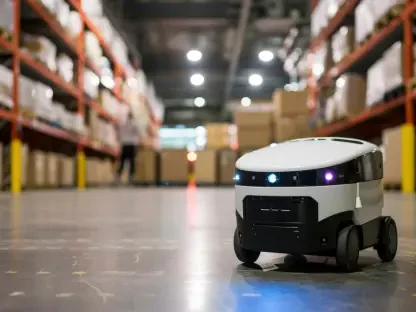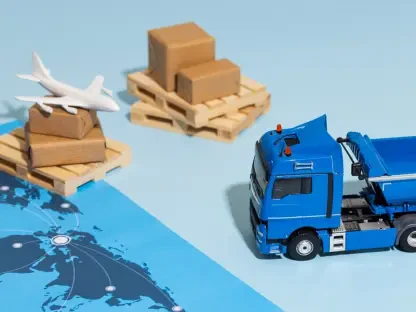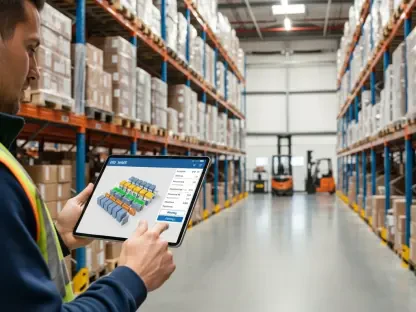With decades of experience in the logistics industry, Rohit Laila has become a leading voice in supply chain management and delivery solutions. His passion for technology and innovation has shaped his approach to tackling the complexities of global trade. In this interview, we dive into the challenges of building resilient supply chains, navigating disruptions, leveraging regional networks in North America, and the role of technology in transforming logistics. Rohit shares his insights on adapting to a rapidly changing environment and creating effective solutions for customers across the globe.
How do you see the mission of creating resilience in global supply chains, and what are the biggest challenges you’re addressing today?
Resilience in supply chains is all about anticipating and adapting to change. Our mission is to ensure goods keep moving, no matter the obstacle. Right now, we’re tackling challenges like geopolitical tensions, environmental disruptions, and fluctuating demand. For instance, issues in key trade routes or sudden shifts in consumer behavior can throw entire networks off balance. We focus on helping customers by offering flexible solutions, whether it’s finding alternative routes or optimizing their inventory management to avoid bottlenecks.
Can you share how recent global disruptions have impacted logistics operations and the strategies you’ve developed to manage them?
The past few years have been a rollercoaster for logistics. The pandemic exposed vulnerabilities, forcing us to rethink everything from capacity planning to workforce safety. More recently, disruptions in critical waterways have required quick pivots—think rerouting shipments or increasing reliance on rail and air freight. Our strategy revolves around close collaboration with customers to understand their pain points and using our global network to offer alternatives. It’s about staying proactive rather than reactive, ensuring we can pivot fast when the unexpected hits.
What role do Canadian operations play in supporting trade flows into the United States, and why are these gateways significant?
Canada is a vital piece of the puzzle for North American trade, especially for cargo coming from Asia. Ports like Prince Rupert and Vancouver have become key entry points, offering less congestion than some U.S. West Coast hubs. Through strong rail connections, we’re able to move goods quickly to the U.S. Midwest and Northeast, cutting transit times significantly. These gateways are crucial because they provide a reliable alternative, helping balance the load across the continent and ensuring faster delivery to major markets.
Even without operating U.S. port terminals, how have you built a strong logistics presence in the region, and what services stand out?
While we don’t run port terminals in the U.S., we’ve created a robust network through logistics services like freight forwarding, warehousing, and multimodal transport. We have strategic facilities in places like Miami, California, and Mississippi, which act as hubs for distribution across North America. These locations allow us to offer tailored solutions, from storing goods close to end markets to managing complex cross-border shipments. It’s about being where our customers need us, with the right tools to get the job done.
How have changes in trade environments, especially with technology customers, influenced the way you design logistics solutions?
Technology customers are driving some of the most dynamic shifts in logistics. With rapid changes in how they source components or distribute products, we’ve had to adapt quickly. For example, we’ve helped reroute shipments to avoid delays during supply chain surges or regulatory changes. It’s about offering agility—whether that’s finding faster routes through our Canadian ports or setting up temporary warehousing to handle sudden demand spikes. We’re constantly mapping out options to keep their operations smooth.
What impact do you see technology and innovation, particularly artificial intelligence, having on the future of logistics?
Technology is a game-changer for logistics, and AI is at the forefront. It’s helping us predict market trends, optimize routes, and manage volume fluctuations more effectively. We’re using data to forecast shipping rates or identify potential disruptions before they happen, which allows us to advise customers on the best strategies. Automation in warehouses is another big focus—tools for sorting and picking are speeding up processes, letting us handle tighter delivery windows. It’s all about staying ahead in a race to deliver faster and smarter.
How do you balance the push for automation with the need for flexibility in supply chain operations?
Automation is fantastic for efficiency, but it can’t come at the cost of flexibility. We carefully evaluate how much infrastructure to automate—whether it’s sorting systems or robotic picking—while ensuring we can still adapt to sudden changes. For instance, if inbound shipments are delayed, we need to adjust without missing customer deadlines. It’s a balancing act of investing in tech that speeds things up while keeping enough human oversight and adaptable processes to handle the unexpected.
What is your forecast for the future of global supply chains over the next decade?
I see global supply chains becoming even more interconnected yet localized over the next decade. Near-shoring will continue to grow as companies look to reduce risks from long-distance dependencies. Technology will play a bigger role—think AI for predictive analytics and blockchain for transparency. But the real challenge will be sustainability; there’ll be immense pressure to cut emissions through greener transport and optimized routes. I believe we’ll see more collaboration across industries to build networks that are not just efficient, but also resilient and environmentally responsible.









